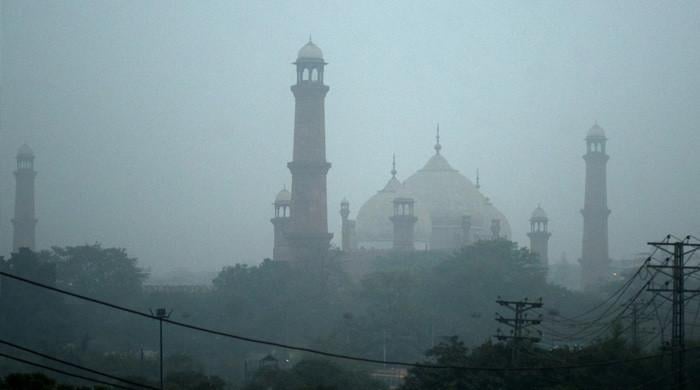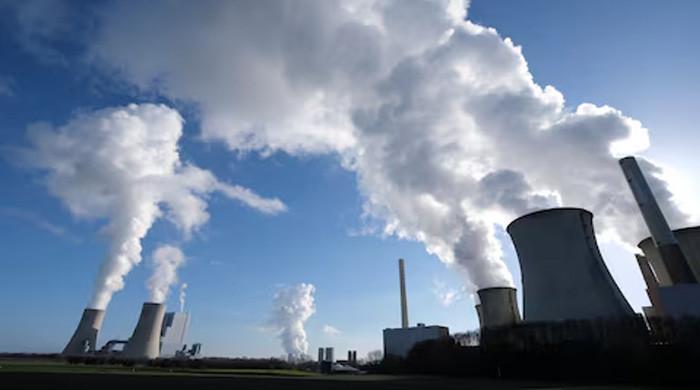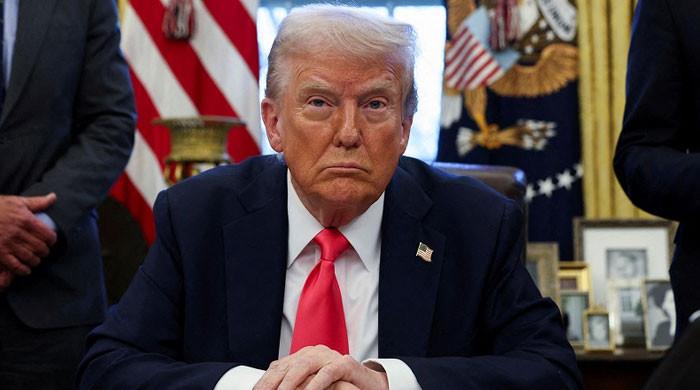How independent is the State Bank of Pakistan?
Currency movements were engineered may have some value
July 07, 2017
This week, Pakistani currency dropped by 3.1 per cent in comparison to the US Dollar. Such a significant downslide in value has not been seen since 2013.
Currency analysts say that this was expected as the central bank, on insistence of the federal government, was holding the currency at an overvalued rate which could not be sustained given the widening trade deficit.
There are two critical points present here, which have implications for future reform of monetary policy in Pakistan.
First, the finance minister, instead of the central bank (theoretically an independent institution) became the chief spokesperson on currency movement.
Ishaq Dar said this was a sudden artificial plunge and the very next day said it was a result of miscommunication by individuals and institutions.
This is not the first time that the finance minister has meddled in the affairs of the State Bank of Pakistan (SBP). Not very long ago, he had even announced the discount rate well before the press conference of SBP’s governor.
How did the markets take this lack of coherent communication on currency movements?
There were several opinions being voiced quietly or over media. The view from some sources at the federal government was that this drop in currency was engineered.
The government wanted to demonstrate that potential political upheavals, partially due to the Joint Investigation Team’s proceedings and aftermath, could put the economy in jeopardy – something which the prime minister also said while talking to media persons on his way back from Dushanbe.
This view, that currency movements were engineered may have some value as the finance minister was able to pull back the value of currency on the same evening.
The business community’s opinion was that the rupee’s downslide was inevitable given the growing outflows of foreign currency, on account of ballooning imports and debt servicing.
Therefore, the SBP, at some point had to decide and gradually move towards the true value of Pakistani rupee. Several economists believe this value to be somewhere around the range of 120 to125.
In a survey by a media daily, over 47pc of informed respondents believe the current true value to be at Rs127.
Once there was no response from the SBP during the entire trading time of July 6, another view surfaced, which was, the leadership at SBP had come to know of a definite change at the top and decided to offer an act of conscious by letting the market forces move towards the true value of the rupee which remains under pressure – something which the SBP had already highlighted in their last quarterly report.
This view also had its moment of truth when during the late hours of July 6, the appointment of the new governor of SBP was made public.
According to the finance minister, the miscommunication which led to the sudden plunge in the value of the rupee has cost the economy over Rs200 billion in losses and those responsible for this will be held accountable.
It is surprising how the Ministry of Finance came up with an estimated figure, despite not having a single functional macroeconomic model or any other scientific means to study the morning-after impact of the rupee’s downslide.
The second critical point in this entire episode is Dar’s claim that macroeconomic fundamentals are strong and they can support the currency at its present value. Perhaps we all need a refresher in the weakening of these fundamentals, several of which have also been highlighted by the International Monetary Fund (IMF).
We know that current demand and growth in the economy is being driven by debt-based and borrowed investment finding its way in to public infrastructure. We know this for certain, as Pakistan Economic Survey 2016-17 tells us that private investment is still at very low levels.
Private investment to gross domestic product (GDP) was below 10pc in the FY17.
The savings ratio has also declined from the previous year’s value. The current account balance – which is sum of the net exports, net income from abroad and net current transfers, saw a widening of deficit from $4.6 billion in July-May 2016 to $10.6 billion in July-May 2017.
The growth rate of exports remained negative during 2017. The new short and long-term loans procured during the period July-May 2017 now stand at $6.4 billion. The above-mentioned escalation in risks to Pakistan’s balance of payments is precisely what the SBP was referring, while making a case for lower value of Pakistani currency.
Let us now turn to a bigger question, how independent is the SBP to manage the rupee, the way it is done in responsible and mature economies?
During August 2015, the National Assembly had passed the State Bank of Pakistan (Amendment) Bill, 2015 granting it autonomy. Many say that this was due to the pressure from IMF, which according to media reports was still not satisfied with the amendment.
The new law promised strengthening of operations at the SBP by replacing federal government’s (approval) authority over its decisions. This again was not enough where the federal government has certain power to manage the board’s decisions and the membership of the board.
A key forum which could have strengthened the SBP’s autonomy is the Monetary and Fiscal Policies Coordination Board. Again by law, this board is supposed to meet every quarter.
However, it rarely meets as scheduled by law. The board members also do not raise their voice against the sporadic frequency of meetings and lack of follow up on previous decisions.
Finally, the finance minister could have taken a different course on July 5, a day before the slide. Relinquishing the obsession with overvalued exchange rate, he could have said that the SBP, being a professional and credible organization, has moved in the interest of Pakistan’s economy and they are completely independent in their assessment and decisions.
This would have helped improve Pakistan’s score in international transparency rankings, since the minister wishes Pakistan to become an active member of the Open Government Partnership (OGP) Forum which helps in ensuring financial discipline, accountability and transparency.
But that, as we all witnessed, is not what happened.
Ahmed is the Deputy Executive Director of the Islamabad-based Sustainable Development Policy Institute.











